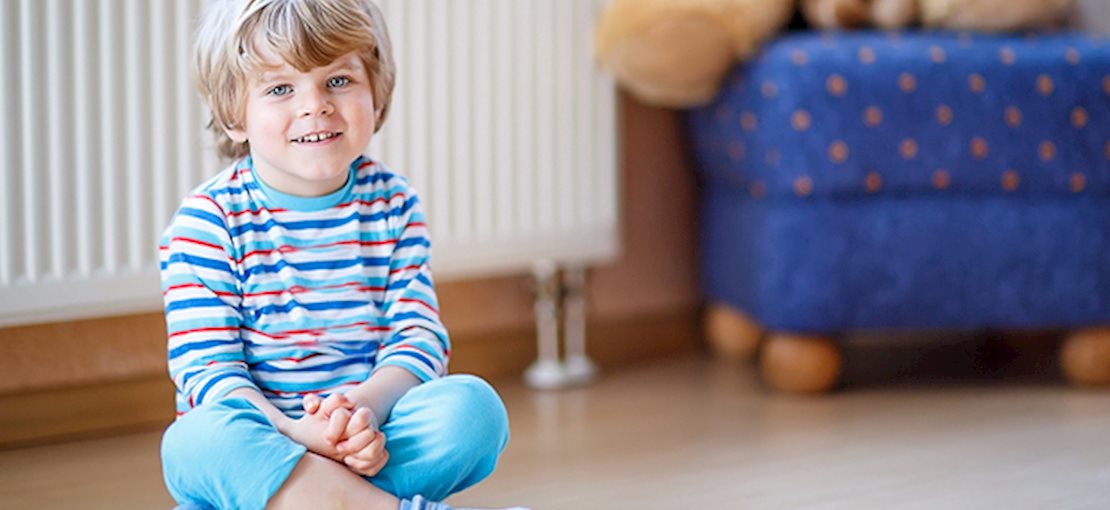Only one-half of your child’s level of happiness is attributed to genetics. The other half begins with a nurturing, kid-friendly home environment, which is the foundation of a child’s well-being.
Children absorb everything around them — sights, sounds, smells, textures, emotions. They have little control over their environment, so it’s up to the parents to cultivate an optimal home ambiance that allows a child to thrive. Turn to the design elements of your home to sustain a warm and harmonious habitat for the entire family.
Add Pleasing Colors
Color has a powerful impact on a psychological level. Encourage calm and focus by adding warm tones, like oranges, browns and greens, to your home. Avoid high-energy colors like red (stress) and harsh colors like white (anxiety). Blue hues are known to be calming as well.
Hang Family Photos
Build and encourage family community by displaying your favorite images of loved ones. Design a photo wall with smiling faces of family members near and far. Tell a story of where you have been and where you are going, says interior designer Emily Mughannam. Houzz shows different ways to create a personal photo wall that will fit your personal design scheme.
Assess Your Air Quality
Air quality can impact learning and your child’s development. Continued exposure to mold, for example, can lead to adverse reactions in kids. Organic chemicals found in everyday household items are emitted causing havoc on a child's (and adult’s) immune system. These VOCs can be combated with the help of air-filtering plants and flowers. Gerbera Daisies are the best for fighting Trichloroethylene and Benzene, and Peace Lilies are the best at fighting all five VOCs, Inhabitant says.
Eliminate artificial scents like candles because they may contrite to breathing problems in children. Essential oils offer a therapeutic alternative.
Declutter
Clutter produces chaos to even the smallest of minds. Children organize visual images to make sense of where they live. It’s very easy for a child to get visually overwhelmed due to disorganization on your part. Declutter to promote a soothing, learning environment for your family.
Incorporate Nature
Certain elements of nature, like plants, water, wood and flowers, nurture the soul and detoxify and re-oxygenate the air. Use the earth’s resources to soften your space. Choose elements and materials that resonate with your own style, whether it’s a seagrass centerpiece, hardwood flooring or a Himalayan salt rock lamp.
Green Your Backyard
Having a green backyard space gives kids a safe place to explore nature and play. Plant a garden, hang a hummingbird feeder and let them play in the dirt to further teach kids to respect and appreciate nature.
Limit Background Noise
Children are especially sensitive to the sights and sounds technology creates. It’s nearly impossible to engage your little one with the everyday distractions of TVs, smartphones and computer screens. Visual over-stimulation can make a child unnecessarily anxious. If you can’t do quiet, run a soothing table fountain or play soft classical music in the background.
Your little seedling has several basic needs: love, attention, protection, rules, self-esteem, a supportive community, culture, nutrition, values, motor and social skills, self-esteem and education. Creating a nurturing home environment is the first step to satisfying these needs and raising a healthy, resilient and happy child.






Add A Comment
Thank you for your comment.
Sorry! There was a problem with your comment submission. Please try again.
Comment
Allowed HTML: <b>, <i>, <u>, <a>
Comments
Thank you for your comment.
Sorry! There was a problem with your comment submission. Please try again.
Thank you for your comment.
Sorry! There was a problem with your comment submission. Please try again.